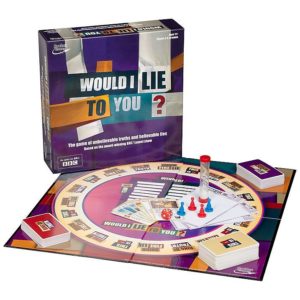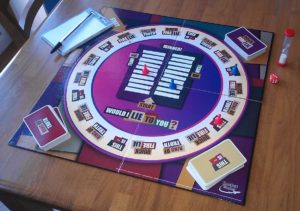
This is a board game based on a TV show Would I Lie To You.
The game is meant to emphasize high interactivity between players and mainly focusses on players’ ability to bluff.
Critical Elements That Made The Game Work
Players: The game utilizes a team competition pattern where two groups compete, and thus providing a challenge aesthetic. It could also be played as a player vs player interaction. The number of players in a group could vary, and the player roles involves making a guess based on cards that are chosen. Players have to interact to make a team guess and to bluff thus creating the fellowship aesthetic.
Objective: The objective of the game is to gain the most points by outwitting the opponents, thus establishing a challenge aesthetic
Resources: The game utilizes a dice roll to decide on the card that would be picked thus providing dynamics that create dynamic tension
Fun
The game is distributed as a board game, and the fun promised is fellowship and challenge.
The game achieves this by having players cooperate to outwit their opponents, and by interacting with each other as they bluff and make guesses.
Graphic Design
The board utilizes a different design that allows a dice roll to determine the card that is played. This keeps players engaged on the results of the dice that would determine what card to play.
Moreover, a visual scorecard is created as palettes are moved on the board to indicate who’s winning. Color is used to separate the teams (one team having a blue palette and another a red palette). The cards are also colored differently to distinguish the different groupings.
Proximity is employed by having the scoreboard grouped together, and the card selections grouped together as well.
The design choices collectively immerse players into the game, and contribute to the fellowship aesthetic by having players trade dice, move cards amongst each other, and talk to each other to figure out responses.

Business Model
The business model works since acquiring the game board provides additional visual resources that provide dramatic tension. Having a board that incorporates the dice would be an additional reason for players to want to buy the board, as that determines the cards that would be played. Additionally, the board has palettes that have to be moved thus would immerse players into the game and contribute to player interactions as promised.


